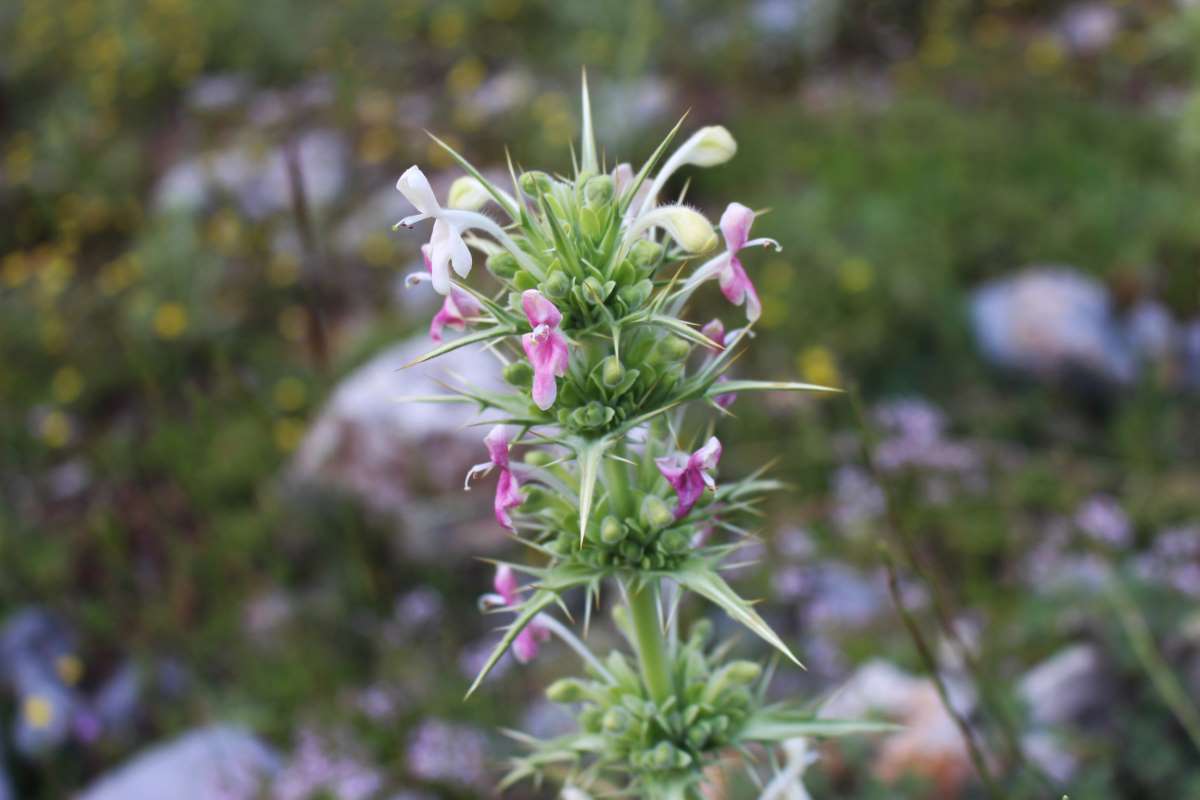Description
Morina – Acanthocalyx –
There are about5 species of evergreen perennials in this genus. They occur on open rocky and grassy slopes and in open woodland in Eastern Europe, Turkey to Central Asia, the Himalayas and Southwestern China. They have rosettes of prickly, lance shaped, glossy, mid to dark green leaves with wavy edges, the leaves become smaller near the tops of the stems. Whorled, spiny bracts are held immediately below spike of tubular, red, pink, white, or yellow flowers, held in whorled clusters. Each flower has a long perianth tube and a wide, 2 lipped mouth. Grow in a mixed or herbaceous border, M. persica is suitable for a rock garden. The seed heads are useful for dried flower arrangements.
Grow in poor to moderately fertile, sharply drained soil enriched with compost in full sun. Protect from winter moisture.
Prone to slugs and rot.
M. persica – This rosette forming perennial from Eastern Balkans, Turkey and Iran grows 5′ feet tall and 2′ feet wide. It produces linear to elliptic, deeply lobed to pinnatifid, very spiny, dark green basal leaves, to 8″ long. In mid and late summer, numerous flowering stems bear dense whorls of bracts below spikes of whorled clusters of scented flowers, to 1 ½” long, flowers white sometimes with yellow flushed throats, and become pink or reddish pink after fertilization.
Zones 5-9





